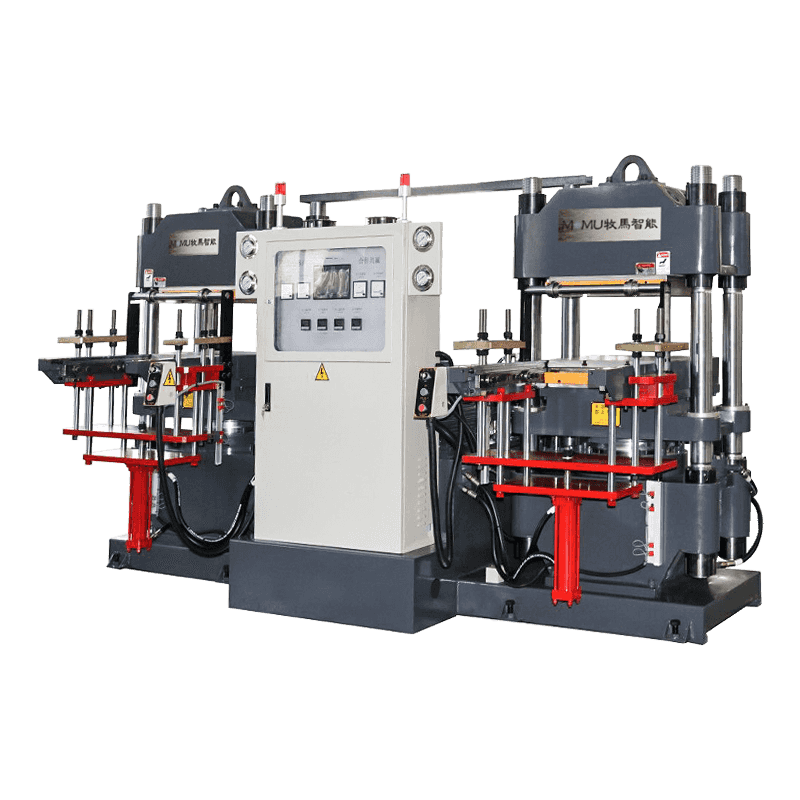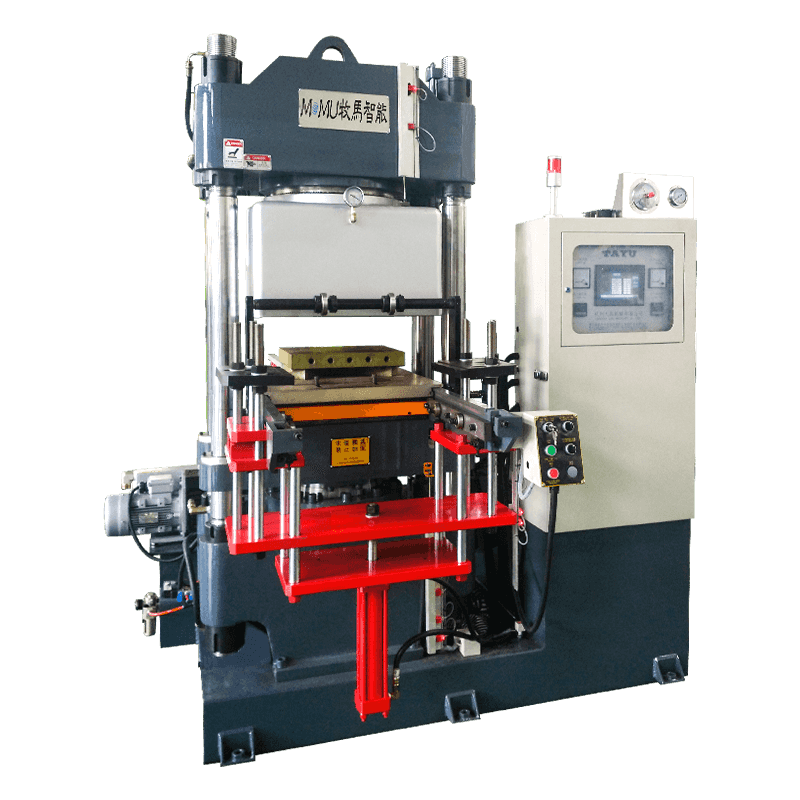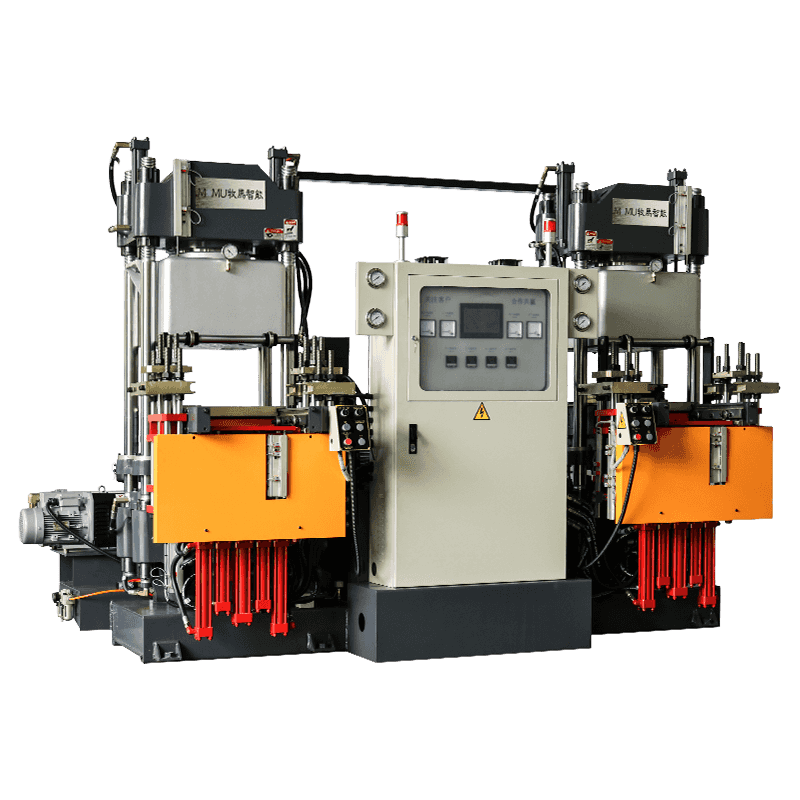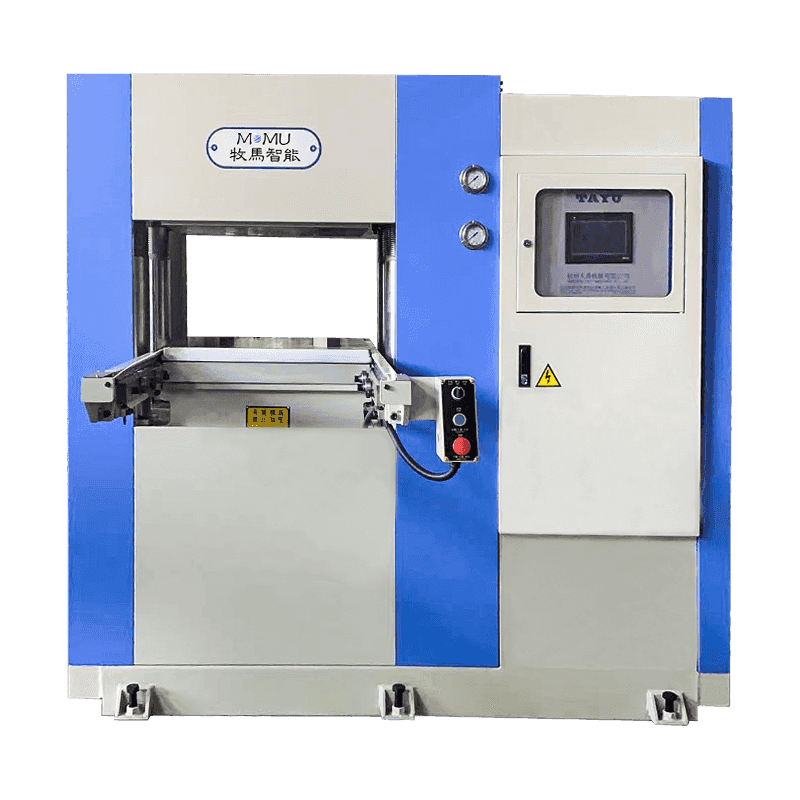Vacuum Compression Molding Machine is an advanced manufacturing equipment widely used in the molding process of various types of plastics, rubbers and composite materials. The equipment uses a vacuum environment and a high-pressure mold to press the material into a specific shape, which can effectively manufacture parts and products with complex structures. With the advancement of materials science and manufacturing technology, vacuum compression molding machines are increasingly used in the fields of automobiles, aerospace, electronics, and medical.
Vacuum compression molding is a manufacturing process that uses vacuum and pressure to mold materials. The basic working principle of the vacuum compression molding machine is as follows:
Put the raw materials (such as resin, rubber, plastic or composite materials) into a pre-designed mold. The mold is usually divided into an upper mold and a lower mold, and the shape of the mold determines the appearance and structure of the final product.
Start the vacuum system to extract the air in the mold to form a low-pressure or vacuum environment. This process helps to remove bubbles and impurities in the material and improve the quality and consistency of the final product.
During the molding process, the material is usually heated to reach a softened state, making it easier to fill every detail in the mold. Different materials require different heating temperatures and times.
When the material softens to a suitable state, the machine applies pressure through hydraulic or mechanical devices to press the material into the shape of the mold. The size and duration of the pressure are adjusted according to the material properties and product requirements.
After the compression molding is completed, the material is cooled to a solid state through a cooling system, and finally the mold is opened and the finished product is taken out. At this time, the product is fully formed and has the required physical properties and shape.
Vacuum compression molding machines provide many significant advantages in the manufacturing process, which makes it an important tool in modern manufacturing. These advantages include:
Vacuum compression molding machines can accurately control pressure and temperature, allowing the material to fully fill every corner of the mold. This makes it particularly suitable for manufacturing parts with complex geometries and high precision requirements.
During the molding process, the air in the mold is removed by the vacuum system, which effectively reduces the generation of bubbles, thereby significantly improving the mechanical properties and surface quality of the product.
The vacuum compression molding process can evenly distribute the material in the mold and reduce waste. At the same time, due to the high molding accuracy, the need for post-processing is reduced, thereby further saving material costs.
Vacuum compression molding machines can handle a variety of types of materials, including thermosets, thermoplastics, rubbers and composites. This enables it to adapt to the diverse needs of different industries and applications.

Because vacuum compression molding machines can quickly complete the heating, compression and cooling processes, they are particularly suitable for small and medium-sized batch production, with high production efficiency and economic benefits.
Vacuum compression molding machines have been widely used in multiple industries. Here are some of the main application areas:
In the automotive industry, vacuum compression molding machines are often used to manufacture lightweight and strong automotive parts, such as dashboards, door panels, bumpers, engine covers, etc. By using composite materials, automakers can reduce vehicle weight and improve fuel efficiency.
The aerospace field has extremely high requirements for material performance and precision. Vacuum compression molding machines are widely used to manufacture structural components of aircraft and spacecraft, such as wings, tails, fairings, and composite skins, etc., to achieve higher strength and lighter weight.
In electronics and electrical manufacturing, vacuum compression molding machines are used to produce precision parts, such as circuit board housings, switch panels, cable sheaths, etc. These products are usually required to have good insulation and durability.
The medical industry requires high-precision and high-performance plastic and rubber parts, such as medical device housings, surgical tools, syringe components, etc. Vacuum compression molding technology can meet these high standards and ensure the safety and reliability of products.
From household appliances to daily necessities, vacuum compression molding machines are widely used to manufacture various plastic and rubber products, such as kitchenware, sports equipment, toys and packaging materials, providing a variety of product options.
With the advancement of science and technology and changes in market demand, the technology of vacuum compression molding machines is also constantly developing and innovating. Here are some trends worth paying attention to:
In the future, vacuum compression molding machines will integrate more automation and intelligent technologies, and through sensors, control systems and data analysis, they can realize real-time monitoring and adjustment of the molding process to improve production efficiency and product quality.
With increasingly stringent environmental protection requirements today, the design of vacuum compression molding machines will pay more attention to energy conservation and environmental protection. For example, by optimizing the heating and cooling system, energy consumption can be reduced and the environmental performance of the equipment can be improved.
With the continuous emergence of new materials, the application of high-performance composite materials in various fields will be further expanded. Vacuum compression molding machines will continue to play a key role in the molding of high-performance composite materials and promote the widespread application of these materials.
In the future, vacuum compression molding machines may develop into multifunctional and modular equipment, allowing users to flexibly adjust and upgrade equipment according to specific production needs, improve adaptability and production efficiency.





